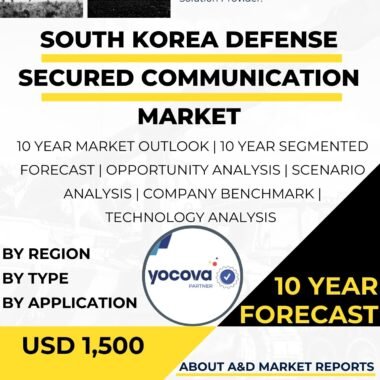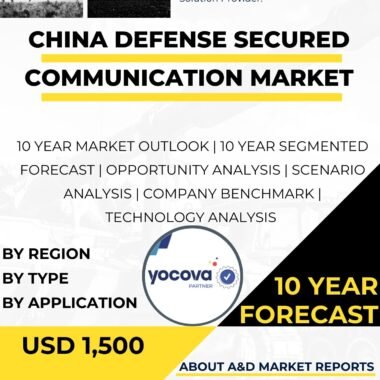Description
Japan Defense Secured Communication Market has gained significant importance in recent years, driven by the nation’s focus on strengthening its defense capabilities and addressing security challenges in the Indo-Pacific region. Secured communication systems are vital for military operations, enabling reliable and confidential information exchange across personnel, units, and command structures. As Japan confronts evolving regional tensions and global security threats, maintaining secure communication channels has become a top priority for the Japan Self-Defense Forces (JSDF) to ensure operational effectiveness and protect national security.
Applications – Defense Secured Communication Market in Japan
Secured communication technologies in Japan encompass encryption protocols and advanced security measures designed to safeguard sensitive data and ensure uninterrupted information flow. The JSDF deploys these systems across multiple domains, including ground forces, naval vessels, aircraft, intelligence units, and command and control centers. In ground operations, secure communication enables troops to coordinate movements and share critical intelligence in complex environments. Naval applications ensure reliable communication among crew members and support missions such as surveillance, navigation, and anti-submarine warfare. In aviation, secure channels are critical for communication between aircraft, air traffic control, and other military platforms, maintaining situational awareness and operational coordination. Command and control centers rely on these systems to securely transmit information between decision-makers and field units, ensuring coordinated and timely responses during operations.
Market Drivers – Defense Secured Communication Market in Japan
The domestic production of secured communication systems has grown steadily, supported by partnerships between the Japanese government, defense industry, and research institutions. This collaboration has fostered innovation, resulting in advanced communication solutions tailored to Japan’s unique defense requirements. Furthermore, the country’s alliance with the United States provides access to cutting-edge secured communication technologies and expertise, strengthening its defense capabilities and contributing to regional stability. Advancements in commercial communication technologies, such as modern encryption algorithms and secure protocols, have also enhanced the performance and cost-effectiveness of military communication systems.
Challenges – Defense Secured Communication Market in Japan
The market faces challenges associated with cybersecurity, interoperability, and integration. As military communication networks become more interconnected, they are increasingly vulnerable to cyber threats, necessitating robust security measures to protect sensitive data. Achieving interoperability among different secured communication systems and platforms is crucial for effective coordination during joint operations. Integrating these systems across multiple military branches requires careful planning and investment to create a unified communication infrastructure. Continuous research and development is also essential to keep pace with rapidly evolving communication technologies and emerging cyber threats.
Conclusion – Defense Secured Communication Market in Japan
The defense secured communication market in Japan has experienced substantial growth and strategic importance, reflecting the country’s focus on modernizing its defense forces and strengthening regional security. Secured communication systems are indispensable for reliable and confidential information exchange across the JSDF’s various branches, supporting operational coordination, situational awareness, and mission success. Collaboration between the government, domestic industry, and international partners fosters innovation and drives the development of advanced communication solutions. Addressing challenges related to cybersecurity, interoperability, integration, and technological advancements is essential to maintain a high-performance, resilient defense communication network. Japan remains committed to leveraging cutting-edge secured communication technologies to enhance its defense capabilities and contribute to regional and global security.




